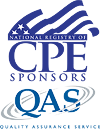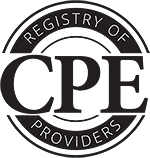Accounting estimates are an approximation of a monetary amount in the absence of a precise means of measurement. The risks of material misstatement for areas of estimation tend to be higher due to the dependence on future events and the intended actions of management. This module will discuss tips and techniques for gathering sufficient appropriate audit evidence to support conclusions related to accounting estimates.
Major Topics:
- Identifying areas of estimation uncertainty, including fair value measurements.
- Assessing risk of material misstatement related to estimates, and testing the estimation process.
- The fair value measurement process, including non-readily marketable securities.
- Applying audit procedures to common areas of estimation.
- Evaluating the results of audit procedures for possible audit adjustment.
Prerequisites
Prerequisite: Experience on basic audit engagements.
Designed For: Accountants who audit accounts, classes of transaction and disclosures with estimation uncertainty.
Learning Objective
- Discover and describe typical areas of estimation and related audit risks.
- Recognize and explain how to link the assessed risk of material misstatement to a detailed audit plan.
- Identify and discuss the importance of challenging management’s assumptions when auditing estimates.
- Discover and describe fair value modeling techniques, including for non-readily marketable investments.
- Explore and describe how to properly evaluate the sufficiency and appropriateness of audit evidence and resulting conclusions when there is accounting uncertainty.
Last updated/reviewed: July 28, 2025
(2) Reviews
(9 rating)Great presentation supported by ample and relevant examples.
Taking this course was a deep dive into often overlooked—areas of audit: the evaluation of accounting estimates and judgments. The material was rich in technical nuance and provided a robust framework for identifying, analyzing, and validating estimates in complex financial environments. Clear distinctions between concepts like estimation uncertainty, tolerable misstatement, and sampling risk. Strong emphasis on professional skepticism, documentation, and corroborating evidence in handling high-risk estimates.


